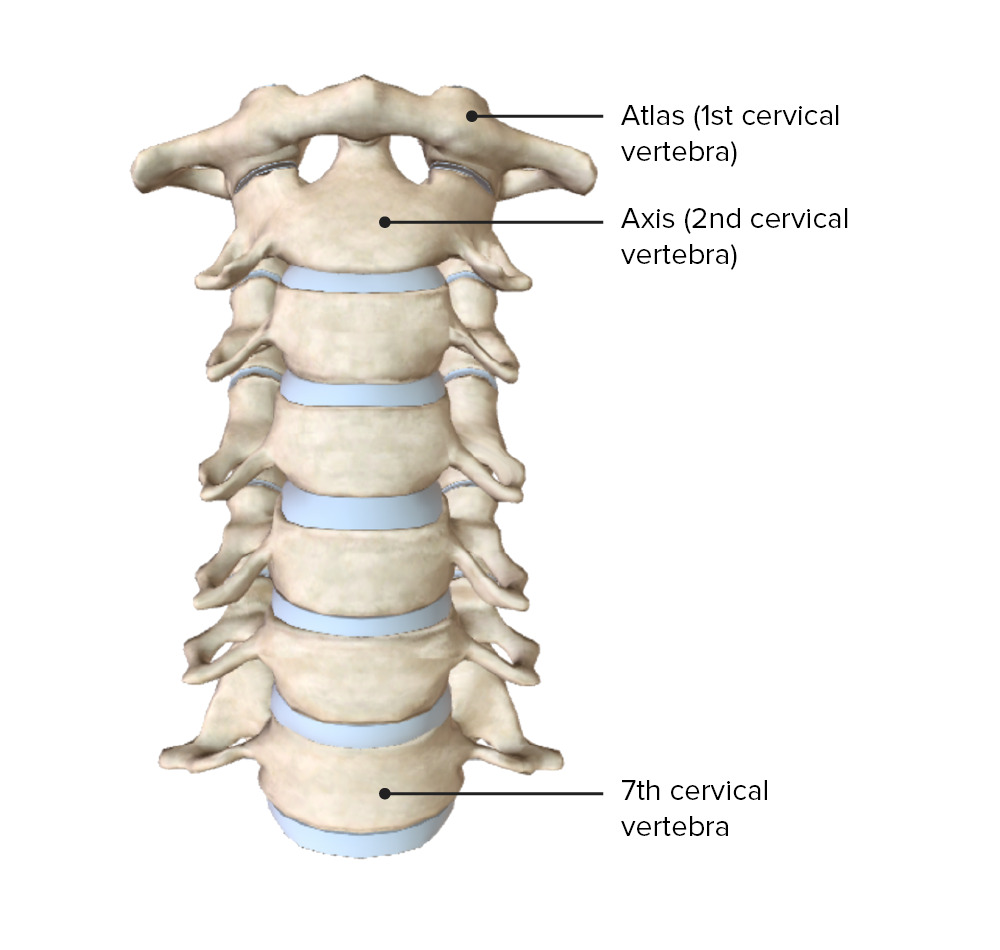Playlist
Show Playlist
Hide Playlist
Movements and Curvatures of the Back
-
Slides Anatomy Movements Curvatures of the Back.pdf
-
Download Lecture Overview
00:01 Now let's take a look at the movements and curvatures of the back. 00:06 The vertebral column isn't a perfectly linear rigid rod. 00:11 It actually has curves that help distribute stress appropriately. 00:17 The first curve is in the thoracic area, and it points somewhat posteriorly, and that's called thoracic kyphosis. 00:26 And it's the first curve to develop. Usually early in infancy. 00:32 The next curve is in the opposite direction where it's actually curving more anteriorly. 00:37 And that's called cervical lordosis, because it's up in the cervical region, and that's the next curvatures develop. 00:46 Then, down in the lumbar region, we also have a curvature pointing someone anteriorly and that's called lumbar lordosis. 00:54 And that's the last one to develop, usually as we begin walking. 01:01 Now there are a lot of deviations of this typical posture in the vertebral column that can develop. 01:07 The ideal alignment has that combination of cervical and lumbar lordosis and thoracic kyphosis. 01:17 Sometimes these curvatures become exaggerated. 01:21 And in this case, it's an exaggeration of the thoracic kyphosis. 01:25 So this would be a hyper kyphosis. 01:28 And sometimes it will result in a compensatory exaggeration of lumbar lordosis. 01:37 Conversely, sometimes it can't be a lack of curvature that can be the problem something called a flat back posture. 01:45 And in this case, we see the vertebral column is almost completely linear. 01:51 We can also have abnormalities of curvature in the coronal plane. 01:55 And those types of curvatures will be called scoliosis. 02:00 Sometimes the scoliosis can be so severe that it actually compresses the thoracic cavity, requiring either surgical correction and or braces. 02:13 Now let's look at the movements of the back. 02:18 Moving the trunk anteriorly will be considered flexion. 02:23 Moving posterior will be considered extension. 02:28 We look to a posterior view and we look in the coronal plane. 02:31 We have lateral flexion and extension. 02:35 Although if you think about it, because we're moving away from the midline in pretty much either direction, we really can think of it as left lateral flexion or right lateral flexion. 02:48 Looking from above, we see we also have rotational movements also called torsion. 02:56 And importantly, we can combine all of these movements so that we can combine them into various degrees of freedom.
About the Lecture
The lecture Movements and Curvatures of the Back by Darren Salmi, MD, MS is from the course Back Anatomy.
Included Quiz Questions
What is a normal curvature of the spine?
- Thoracic kyphosis
- Cervical kyphosis
- Lumbar kyphosis
- Sacral lordosis
What condition is characterized by a sideways curvature of the spine?
- Scoliosis
- Cerebral palsy
- Muscular dystrophy
- Flat back posture
- Meningocele
Customer reviews
5,0 of 5 stars
| 5 Stars |
|
5 |
| 4 Stars |
|
0 |
| 3 Stars |
|
0 |
| 2 Stars |
|
0 |
| 1 Star |
|
0 |




